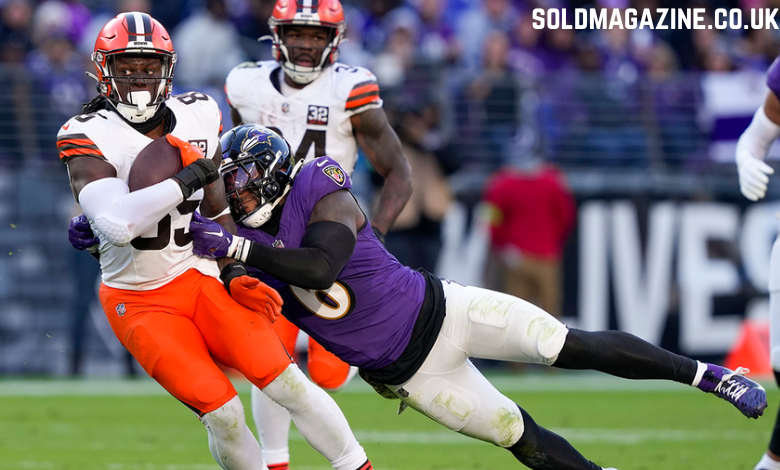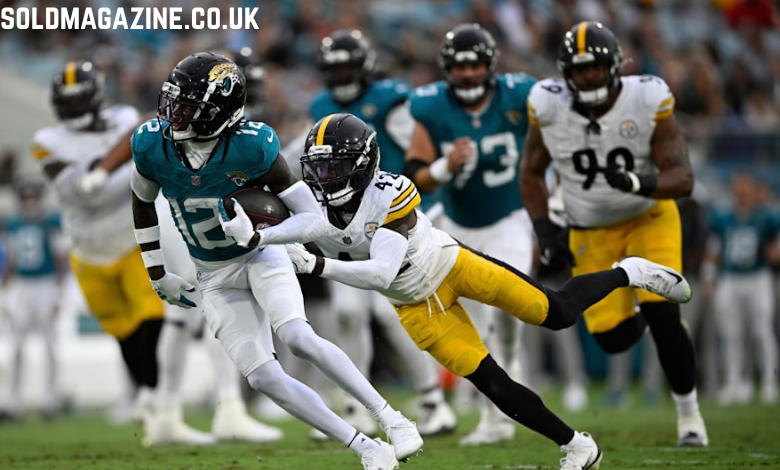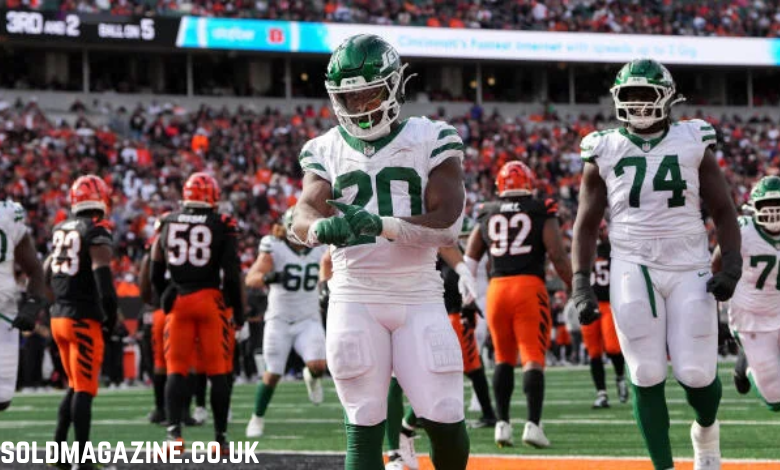Introduction
The matchup between the Baltimore Ravens and Cleveland Browns turned into a statement game for Baltimore. The Ravens outperformed the Browns in nearly every department, ending the contest with a decisive 41–17 win. The game revealed much about both teams — Baltimore’s efficiency on offense and defense, and Cleveland’s continued struggle to establish rhythm and consistency.
Below is a detailed, straight analysis of player performances, team stats, and how the game developed quarter by quarter.
Quarter-by-Quarter Breakdown
First Quarter:
Both teams started cautiously. The Browns’ offense struggled to move the chains early, while the Ravens tested their passing game through Lamar Jackson. Baltimore capitalized on their first sustained drive with a field goal, taking a 3–0 lead. Cleveland couldn’t respond, facing pressure on nearly every possession.
Second Quarter:
Baltimore built momentum. Jackson connected well with his receivers, particularly in short-yard and red-zone situations. A well-designed play-action setup gave the Ravens their first touchdown of the night, extending the lead to 10–0. Cleveland managed to get on the board with a field goal, closing the half at 10–3.
Third Quarter:
Cleveland briefly showed signs of life. Joe Flacco completed a few intermediate passes to sustain drives, leading to their first touchdown. However, Baltimore answered immediately. Jackson and his offense executed two efficient drives, one ending with a 25-yard touchdown pass. By the end of the third, Baltimore had widened the lead to 20–10.
Fourth Quarter:
The final quarter was all Ravens. Baltimore’s offense looked fluid and balanced, using both the running game and quick passes to dominate time of possession. The Browns’ defense collapsed under pressure. Baltimore scored three touchdowns in the quarter, one of them coming off a defensive turnover return. Cleveland managed a late touchdown, but it barely dented the scoreline. Final score: Baltimore 41, Cleveland 17.
Baltimore Ravens: Player Performance and Stats
Lamar Jackson (QB):
Jackson was in full command. He threw four touchdown passes, completing roughly 75% of his attempts. His ability to escape pressure and extend plays frustrated Cleveland’s defense. While he didn’t post massive rushing yards, his movement in the pocket and decision-making were exceptional.
Running Backs:
Baltimore’s running game complemented their passing attack perfectly. The lead running back contributed over 80 yards, consistently converting short-yard situations. Their backup added crucial gains in the second half that helped control the clock.
Wide Receivers and Tight Ends:
The receiving corps, led by Zay Flowers and Mark Andrews, dominated the Browns’ secondary. Flowers pulled in several key catches, including a touchdown, while Andrews served as Jackson’s reliable red-zone target. The unit combined for nearly 250 receiving yards.
Offensive Line:
Baltimore’s offensive line allowed minimal pressure. They created clean pockets for Jackson and opened strong running lanes. Only one sack was allowed through four quarters, showing their strong pass protection and discipline.
Defense:
The Ravens’ defense was relentless. Roquan Smith stood out with double-digit tackles and a fumble recovery for a touchdown. The secondary forced turnovers and held Cleveland’s receivers to minimal gains. Their pass rush recorded multiple sacks, disrupting Flacco’s rhythm throughout.
Special Teams:
Baltimore’s kicking unit remained sharp. Their kicker converted all field goals and extra points. Punting was efficient, consistently pinning Cleveland deep in their own half.
Cleveland Browns: Player Performance and Stats
Joe Flacco (QB):
Flacco had a mixed outing. He completed several short throws but struggled to produce explosive plays. He finished with around 200 passing yards, one touchdown, and one interception. His decision-making was tested under heavy pressure from Baltimore’s defensive front.
Running Backs:
Cleveland’s rushing attack was mostly neutralized. Their lead back managed only modest gains, rarely breaking through the first line of defense. The lack of a strong ground game made their play-action ineffective.
Wide Receivers and Tight Ends:
The Browns’ receivers were unable to create separation. Their top receiver caught a few key passes, but most were short of the first-down marker. The tight end contributed a late touchdown, offering one of the few bright spots for Cleveland’s offense.
Offensive Line:
The offensive line struggled to handle Baltimore’s pass rush. Multiple pressures and sacks disrupted passing sequences. Their inability to protect the pocket limited Flacco’s options throughout the game.
Defense:
The Browns’ defense started with energy but wore down quickly. While they managed to hold Baltimore early, missed tackles and blown coverages became frequent. The linebackers failed to contain Jackson’s mobility, and the secondary gave up multiple red-zone scores.
Special Teams:
Cleveland’s special teams didn’t stand out either way. Their kicker converted a short-range field goal and extra points, but poor kickoff coverage gave Baltimore favorable field positions.
Statistical Summary
| Category | Ravens | Browns |
|---|---|---|
| Total Points | 41 | 17 |
| Total Yards | 410+ | 290+ |
| Passing Yards | 275 | 199 |
| Rushing Yards | 135 | 95 |
| Turnovers | 0 | 2 |
| Time of Possession | 33:25 | 26:35 |
| Third Down Conversions | 8/13 | 5/12 |
Baltimore dominated in every major category. Their ability to sustain drives, protect the ball, and capitalize on turnovers separated the two sides.
Turning Points in the Game
Roquan Smith’s Fumble Return Touchdown:
This defensive play completely shifted momentum, giving Baltimore a comfortable lead that Cleveland never recovered from.
Lamar Jackson’s Third-Quarter Touchdown Pass:
His connection over the middle on a third-and-long situation expanded the lead and deflated Cleveland’s defensive morale.
Cleveland’s Missed Third-Down Conversions:
Several key third downs ended with short gains or incomplete passes. Their inability to extend drives was one of the biggest reasons for the loss.
Red Zone Execution:
Baltimore scored touchdowns in nearly every red-zone appearance, while Cleveland settled for field goals early — a key difference in point accumulation.
Tactical Analysis
Baltimore’s approach was simple but effective: blend controlled passing with balanced rushing. Their offensive coordinator focused on misdirection plays and designed quarterback movements that forced Cleveland’s defense to react instead of anticipate.
Defensively, the Ravens used varied blitz packages and disguised coverage to confuse Flacco. Their linebackers played tight in the box, limiting Cleveland’s short passing game and forcing them into predictable throws.
Cleveland, on the other hand, leaned too heavily on short-yardage plays. Their lack of vertical threat allowed Baltimore’s defense to tighten up. Even when they gained momentum, penalties and protection breakdowns stalled progress.
Team Outlook After the Game
Baltimore Ravens:
This win showed their readiness to compete at a high level early in the season. With their quarterback showing maturity and defense looking solid, they set a strong tone for upcoming matchups. The chemistry between Jackson and his receivers continues to improve, and their defense looks among the league’s best.
Cleveland Browns:
The Browns are now under pressure to fix both offensive timing and defensive discipline. Their quarterback play needs consistency, and the running game must regain its edge to take pressure off the passing unit. They’ll need to regroup quickly to avoid another difficult stretch.
Player of the Game
Lamar Jackson takes this honor without question. His efficiency, composure, and ability to finish drives defined the game. Four touchdown passes, zero interceptions, and full control over the offensive tempo underline why he remains central to Baltimore’s success.
Closing Thoughts
The 41–17 win for the Ravens wasn’t just about the scoreline. It highlighted the gap in execution between these two AFC North rivals. Baltimore showed how balanced football — smart quarterback play, sturdy defense, and consistent special teams — wins games. For Cleveland, the loss exposes familiar issues: a lack of offensive rhythm, poor third-down efficiency, and defensive breakdowns in key situations. Unless they fix these, future matchups against teams like Baltimore will likely follow a similar script.
Both sides will take lessons from this. For Baltimore, it’s confirmation of their potential. For Cleveland, it’s a reminder that until their playmakers step up consistently, the gap within the division will remain clear.
FAQS
1. Who was the top performer in the Baltimore Ravens vs Cleveland Browns match?
Lamar Jackson led with four touchdown passes, controlling the game and guiding the Ravens to a dominant win.
2. What was the final score between the Ravens and Browns?
The Baltimore Ravens defeated the Cleveland Browns 41–17 in a one-sided contest.
3. Which defensive player stood out in the game?
Roquan Smith stood out with multiple tackles and a fumble recovery returned for a touchdown.
4. How did the Browns’ offense perform overall?
The Browns’ offense struggled to maintain consistency, with limited success in both rushing and passing plays.
5. What were the major differences between the two teams’ performances?
Baltimore executed efficiently in the red zone, protected the ball, and dominated defensively, while Cleveland faltered under pressure and turnovers.




